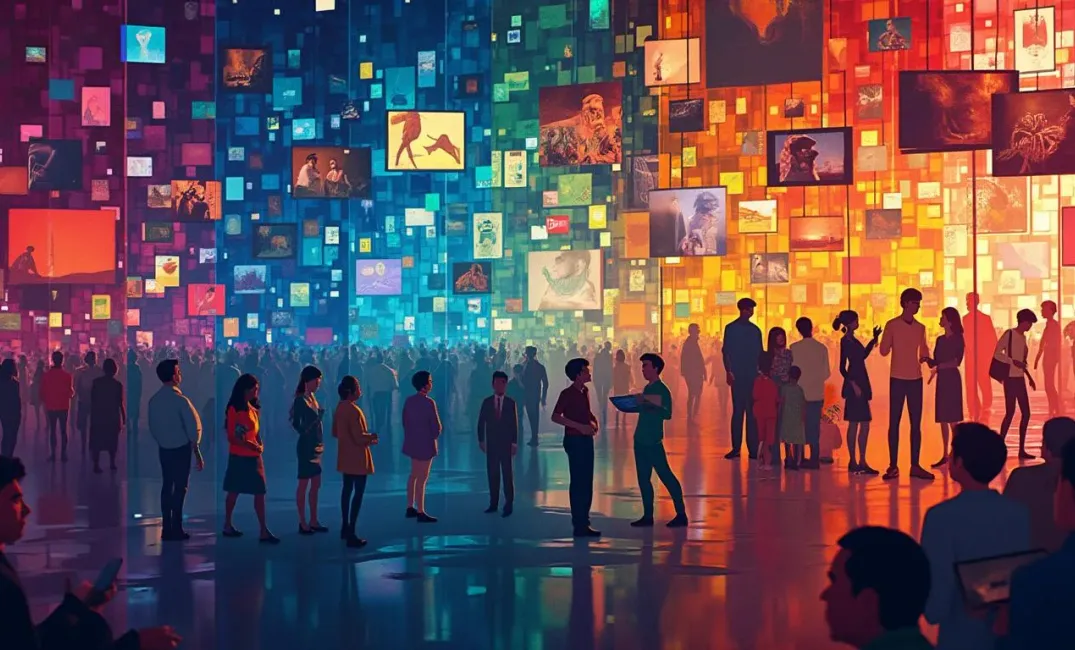Introduction: The Silver Screen, Humanity's Mirror
"Cinema is the most beautiful fraud in the world." — Jean-Luc Godard
Cinema, a collective art form, weaves imagination with reality, offering a lens through which humanity glimpses its multifaceted existence. From its inception, film has captured the complexity of human emotion, culture, and society. It holds a mirror up to nature, channeling dreams, aspirations, and fears into compelling narratives. By exploring the evolution and influence of cinematic art, we gain insight into the dynamic interplay between storytelling, technology, and cultural identity.
The Birth and Early Days of Cinema
The Magic of Moving Images
- Origins of Film: The late 19th century heralded the birth of cinema, with pioneers like the Lumière brothers and Thomas Edison experimenting with moving images. Edison's kinetoscope and the Lumières' cinematograph introduced audiences to a new visual experience.
- Silent Era's Global Impact: Silent films transcended language barriers, conveying stories through visual artistry and emotive performances. Icons like Charlie Chaplin and Buster Keaton innovated narrative techniques that would shape future filmmaking.
Innovations and Artistic Expression
- Technical Advancements: Filmmakers explored new possibilities through effects and techniques like stop motion, multiple exposures, and innovative sets. Georges Méliès, for example, pushed boundaries with "A Trip to the Moon," merging fantasy with cinematography.
- Artistic Movements: Early cinematic movements such as German Expressionism and Soviet Montage introduced distinctive aesthetics, reflecting societal tensions and political landscapes.
Sound and Color: Transforming the Cinematic Experience
The Talkies Revolution
- Sound Transformations: The advent of synchronized sound in the late 1920s revolutionized the film industry. "The Jazz Singer," heralding the "talkies" era, transformed cinema by integrating dialogue and soundtracks, enhancing narrative depth and emotional resonance.
- Musical Expression: The incorporation of music, exemplified by lavish musicals like "Singin' in the Rain," explored new dimensions of storytelling, blending song and dance with visual storytelling.
Technicolor and Cinematic Vibrancy
- Color Innovations: The introduction of Technicolor in the 1930s offered filmmakers a vibrant palette, transforming visual storytelling. Films like "The Wizard of Oz" showcased Technicolor's potential to captivate and mesmerize audiences.
- Artistic Diversity: Color cinema enabled directors to explore mood, symbolism, and cultural themes artistically, broadening narrative possibilities and audience engagement.
The Golden Age of Hollywood and Global Cinema's Renaissance
The Hollywood Dream Factory
- Studio System: Hollywood's studio system dominated the mid-20th century, creating iconic stars and films that defined the era. Studios like MGM and Warner Bros produced legendary films that became cultural landmarks.
- Genres and Formats: Genres such as film noir, westerns, and epics flourished, offering diverse narratives that reflected societal shifts and aspirations. The Silver Screen became a platform for inspiration and introspection.
Global Perspectives and New Voices
- European Art Cinema: Post-WWII Europe nurtured auteurs like Ingmar Bergman and Federico Fellini, whose films offered introspective and existential reflections, providing counterpoints to Hollywood's formulaic productions.
- New Waves: Movements like the French New Wave challenged conventions with innovative storytelling and editing, inspiring a global renaissance in cinematic creativity.
The New Hollywood and Globalization of Film
Rebirth and Innovation
- Directorial Freedom: The 1970s saw the rise of "New Hollywood," where directors wielded artistic control, crafting landmark films like "The Godfather" and "Star Wars," which redefined storytelling and blockbuster status.
- Independent Cinema: Independent filmmakers embraced risk-taking, offering fresh perspectives and challenging traditional commercial restraints. Filmmakers like Martin Scorsese and Spike Lee infused diversity and realism into their narratives.
Technology and Accessibility
- Digital Revolution: The late 20th century's digital transition revolutionized filmmaking, making editing and special effects more accessible. Digital cameras empowered indie filmmakers, democratizing film production.
- Global Networks: The internet and streaming platforms expanded reach, allowing international films to find diverse audiences. Cinema became a global conversation, transcending boundaries through shared narratives.
Cinema Today: Diverse Voices and Future Horizons
Amplifying Marginalized Narratives
- Inclusivity and Representation: Contemporary cinema increasingly embraces diverse voices, exploring narratives from marginalized communities. Directors like Ava DuVernay and Bong Joon-ho challenge norms and amplify underrepresented perspectives.
- Cultural Exchange: Global collaborations foster cross-cultural exchanges and insights, enriching the cinematic landscape with multifaceted stories and diverse experiences.
Future Visions and Technological Frontiers
- Immersive Experiences: Technologies like virtual reality (VR) and augmented reality (AR) offer immersive cinematic experiences, allowing audiences to engage with narratives interactively, transforming viewer participation.
- AI and AI-Driven Storytelling: The rise of artificial intelligence introduces potential for new forms of content creation and animation, posing ethical and artistic questions as technology redefines storytelling landscapes.
Conclusion: Cinema as Humanity's Everlasting Storyteller
"Films are not about realism. Films are about emotion." — David Lynch
Cinema remains a dynamic cultural force that reflects and shapes humanity's values, dreams, and aspirations. As a tapestry of dreams and realities, film weaves a narrative of collective human experience, offering insights, challenges, and reflections that transcend time and space.
As we continue to explore new horizons of storytelling and technology, let us cherish cinema's legacy as a cultural beacon, one that illuminates the path toward empathy, understanding, and connection. In cinema, the essence of humanity finds expression, a luminous dialogue of imagination that continues, unbroken, across generations and stars.
SILENT ERA, DIVERSITY IN FILM, FILM HISTORY, TECHNOLOGY IN FILMS, GLOBAL CINEMA, HOLLYWOOD, CINEMA

